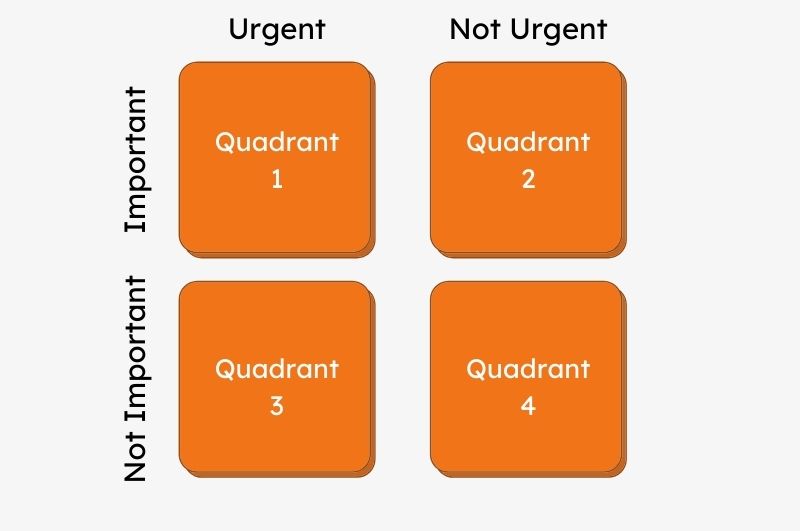Working from home has been a fantastic experience for you, except for one thing: you seem to work later and later every day. While the freedom to jam out your favorite tunes and take breaks whenever you want is wonderful, you need help improving your work-from-home time management.
You’re not alone! Many people struggle with learning how to increase productivity at home. Thankfully, we’ve researched 15 simple tips that can improve your work-from-home schedule and increase productivity working from home. Each step is something that just about anybody can do without challenge.
How Can You Improve Productivity at Home?
To increase productivity working from home, it is vital to avoid distractions and schedule your day intelligently. The tips we compiled below help you stay focused on your day and improve your productivity. Here are 15 ways you can master how to increase productivity at home:
15 Tips to Increase Productivity Working From Home
The list below of work from home hacks / tips will help you increase productivity without forcing you to change too much about your daily schedule. You’ll need to tweak a few things and tighten up your overall methods. But it generally should be pretty easy to implement these steps with little issue.
1. Eliminate Distractions
The biggest thieves of your products are likely various distractions that occur throughout the day. For example, you might get regular social media updates on your phone or like watching television while you work. These steps definitely won’t increase productivity working from home.

Instead, turn off your television and notifications and buckle down to work. When learning to increase productivity at home, it is vital to take these steps. Doing so can ensure that you can focus on your work without running into distractions, which can take 15-20 minutes per distraction to refocus. Also: stop multitasking right away to work better.
2. Schedule Your Daily Properly
It is important to sit down at the end of each day and write down a list of what you need to do next. This step is very productive because it helps you brainstorm your tasks and identify things you might have missed doing. It also gives you a visual aid for working the next day.
Make sure to schedule a little more time than you expect for each activity. This extra 10-15 minute period is a buffer for when unknown circumstances pop up. For instance, those additional few minutes can help you stay on task if your computer shuts down unexpectedly or freezes up on you. Scheduling also creates a structured day, which helps you to be more productive, this is crucial for many, especially multitasking people like housewives.
3. Use Time Management Methods
If you have difficulty focusing on your daily tasks, you might need to try a unique time management tool to stay working. For example, the Pomodoro Technique works well for at-home employees because it breaks your day into easy-to-do work chunks.

You start working for 25 minutes and take a five-minute break after finishing. After working four of these periods, you take a 15-30 minute break. Since the human brain can focus at maximum capacity for about 25 minutes, this time frame is perfect for scheduling your day.
You can also try the “Eat the Frog” method, understand the time management matrix, or integrate the Ivy Lee Time Management concept into your workplace to improve efficiency.

4. Produce a Better Work-Life Balance
Working from home has a bad way of upsetting your work-life balance and can decrease your productivity. For example, you might try doing various chores or personal activities during the workday and lose productivity. Separating your work and home life is a critical step here.
Try to increase productivity working from home by completing your work tasks and tackling at-home needs. Don’t do chores if you have anything that needs to be done those should be done on your productive days off. Avoiding home-based things during your breaks is even better for minimizing work-life issues.
5. Set Reasonable Daily Goals
Many people suffer motivation paralysis when faced with major tasks that seem impossible to tackle at once. Break down your big tasks into smaller goals that you can accomplish every day. Attainable goals help keep you focused and minimize motivation problems.
For instance, let’s say you have to collect data from 10,000 customers for your job. Break these customers up into categories, such as their neighborhood and age. Focus on those specific categories on varying days to ensure that you stay focused and avoid complications.
6. Improve Your Communication Options
Have you ever had one of those days when you sat at home at your desk waiting to hear back from a co-worker and lost precious hours of productivity? This problem is not uncommon and must be avoided by setting up stronger lines of communication that minimize wasted work hours.

Get direct phone lines to your co-workers and their text message options. You can then set up messaging through other platforms to ensure you stay in touch throughout the day. Doing so keeps your communication lines open and avoids serious motivation or productivity lapses.
7. Create a Personal Office
A personal office is a great way to increase productivity at home. Setting aside a special area where you focus on work minimizes work-life balance problems. It also puts you in the mindset to work by taking you away from a more comfortable home setting.
Just as importantly, you can set up things like a desk, specialized internet connections, printers, fax machines, and more to stay productive. You should also dress for the day whenever you’re in your office, including shaving and dressing as if you’re going into an office, to stay motivated. This tip works because it pushes your brain into work mode and separates it from the “relax” mode you normally feel at home.
8. Set and Record Team Meetings
Meetings help track your work activity, get you in touch with your co-workers, and make planning various activities easier. Make sure you set regular team meetings throughout your week, including early daily meetings, to catch up and stay on task for your work duties.
Recording and saving your meetings might seem excessive, but it can be beneficial. For example, if there’s a conflict about what was said during a meeting, you can replay the meeting video or audio recording to let everybody know what was said.
9. Know When You’re Most Productive
Everybody has different times when they feel the most productive. Do you work best just after you get into the office early in the morning? Or are you best after a few hours and several cups of coffee? Know when you’re at your most productive and schedule your toughest tasks then.
Let’s say you typically do best between noon to three o’clock. Try to schedule your hardest tasks and tackle easier duties outside those times. Please pay attention to your body and its needs! If you struggle for any reason, you may need to change up your schedule a bit.
10. Turn Off Your Social Media
Studies find that social media can disrupt many teens, but also note how it affects adults. To increase productivity working from home, turn off all your social media accounts and stay off them while you work. There’s nothing that you can’t come back to later. Remember: the “five-minute scroll” common in social media typically comes with a 25-minute block of wasted time and energy.

You can reward yourself using your short breaks as a social media update. However, it is best to stop using social media when you work. Eventually, the addiction will fade, and you’ll find it easier to learn how to increase productivity at home by accessing no social media.
11. Get Up And Exercise
Exercise is vital to improving your overall emotional health and can help you stay strong and secure during your workday. Set up various workout periods during your day, including in the morning and during longer breaks, to ensure you get your blood pumping more effectively.
Setting up a work-from-home exercise routine includes finding things you enjoy doing and focusing on them. Don’t forget to work things like your core muscles, abs, and lower back to keep them healthy. Focus on strong posture during your day to further increase your productivity.
12. Take Breaks to Refresh Yourself
Though it might seem counterproductive, you can increase productivity working from home by scheduling more breaks in your day. Breaks help refresh your mind and make it easier to accomplish tougher tasks with renewed energy and excitement.

Schedule your breaks according to your day, and listen to your body as you work. Take a break if you lag or cannot tackle a task on time. A little pause may give you a bit of energy and make working a little easier. Consider exercising during your break to improve your energy further. Other refreshing steps include a quick walk, meditation, breathing exercises, and stretching.
13. Schedule “Heads-Down” Time
When learning to increase productivity at home, it is important to know about “heads-down” time. This refers to those periods when you ignore all outside distractions and work at your best. Always have time when you do this, and stick with it to ensure you stay on task.
It is important to let your co-workers know about this time and to communicate your unavailability while you work. For example, you can set a message on your Slack channel that you’re “working hard” and are “away” at the moment. Chat channels like these let you mute messages whenever you want.
14. Stick To Your Routine
The last way to increase productivity working from home is to set a schedule and stick to it. Multiple studies confirm that a set work routine is a powerful way to boost your productivity. If you know what you have to do every day and have it planned, you can tackle it more effectively.
For example, try to go to bed and wake up simultaneously every day. Plan your meals at specific times and different tasks at unified periods. Naturally, you might have to adjust your schedule sometimes. But making it as routine as possible minimizes time conflicts and improves your productivity.
15. Understand Time Zone Differences
When you work remotely, there is a chance that you might have multiple co-workers in different time zones. It can be challenging to plan around these differences, but it isn’t impossible. For example, you may have to get up early to work with someone in an earlier time zone than you.
Planning around these differences may include setting up meetings that make sense for more people. For example, if you’re the only person on your team that lives outside the Eastern Standard Time Zone, you may have to bite the bullet and work around their needs.
Conclusion
As you can see, these 15 tips can help you manage your time more productively and become a more successful worker. Understanding how to increase productivity at home can also help you plan things like chores and other important steps with minimal challenge.
For example, you can balance these ideas within your time management matrix to improve your overall productivity. Don’t be afraid to reach out for help from your team if you’re struggling at any time. They are there to support you and will do what they can to help you feel more comfortable.


